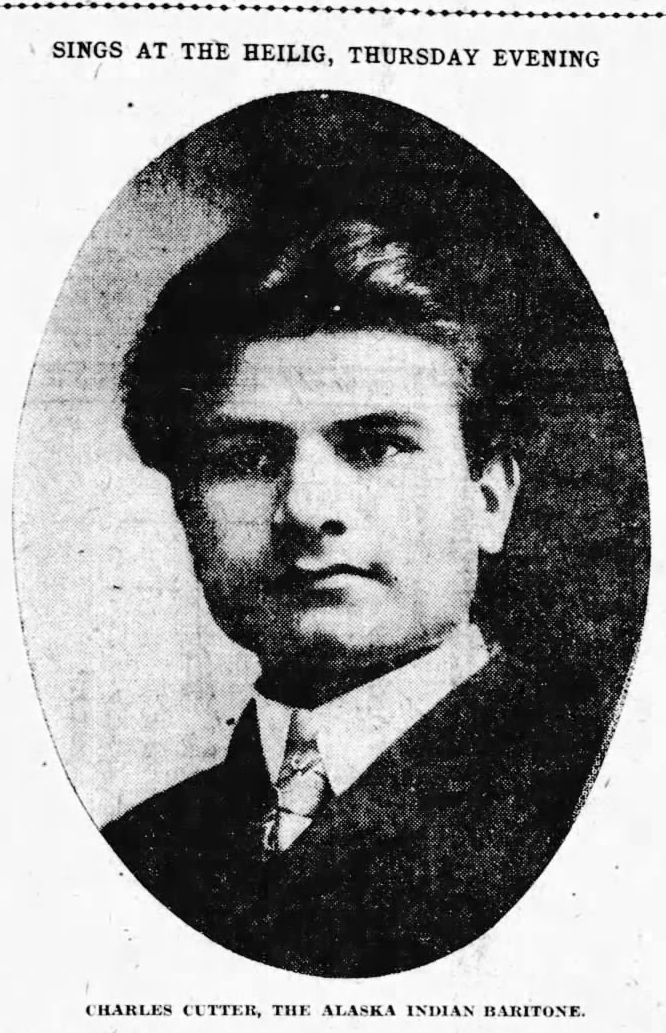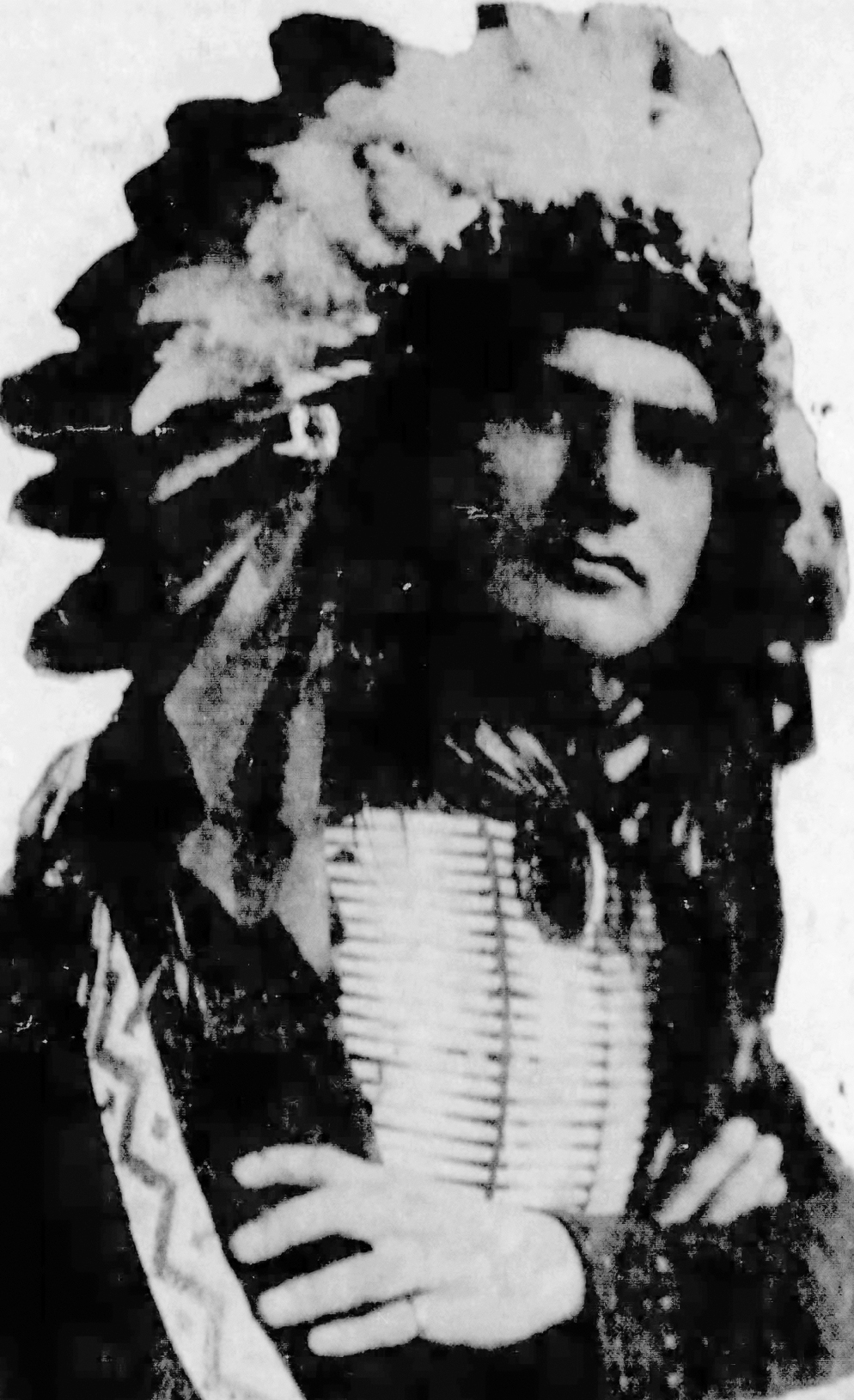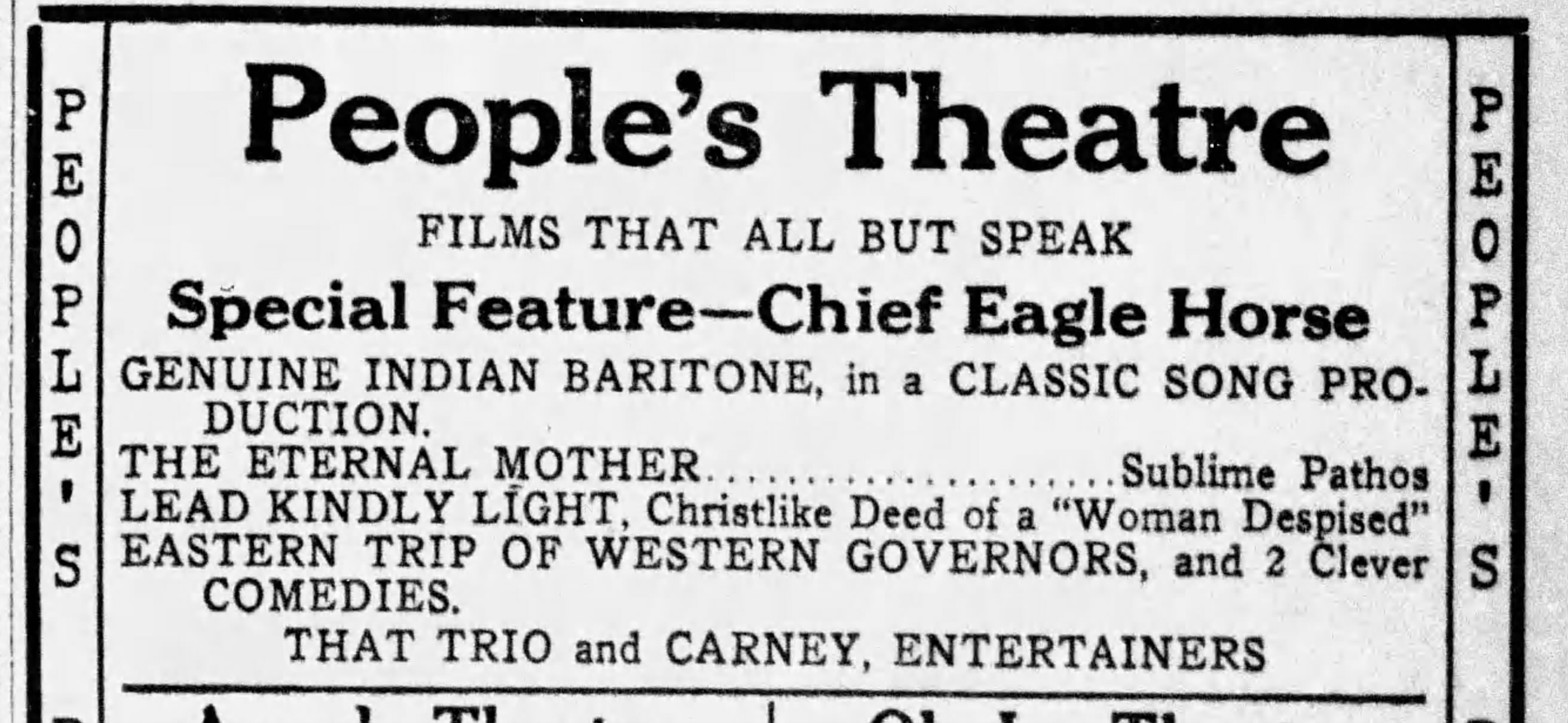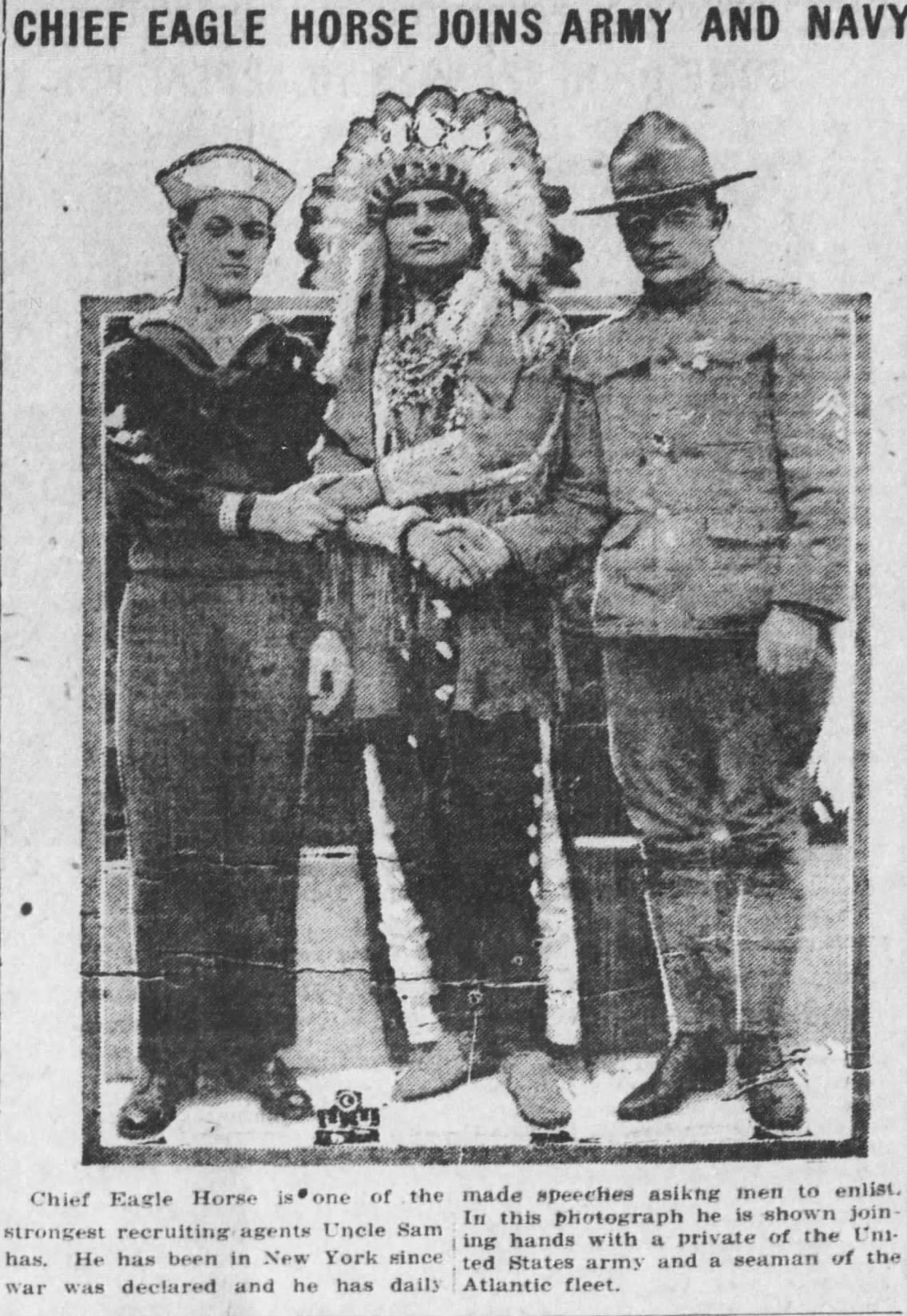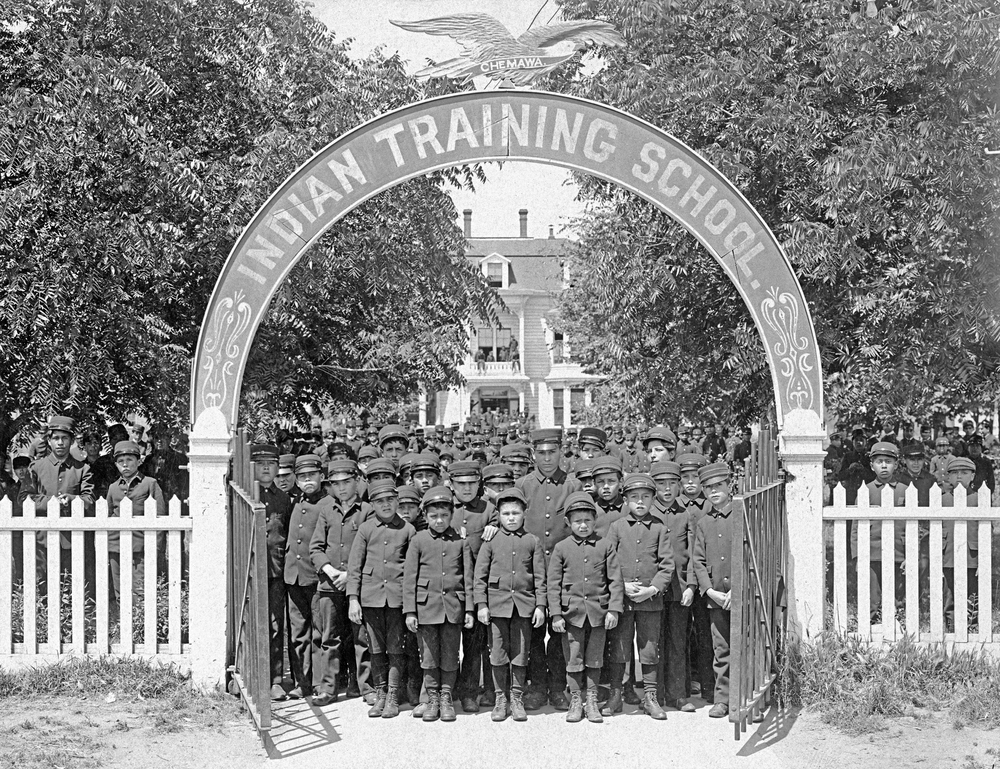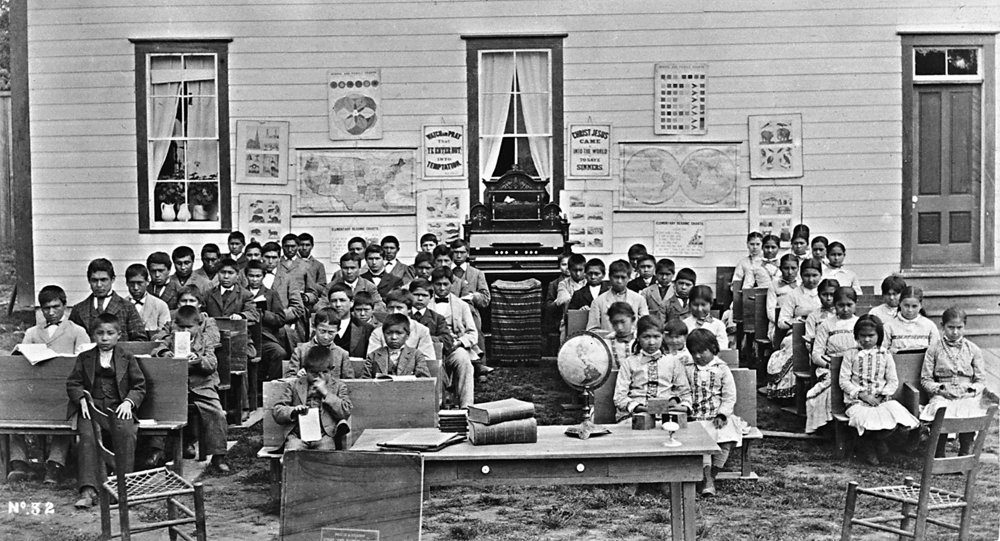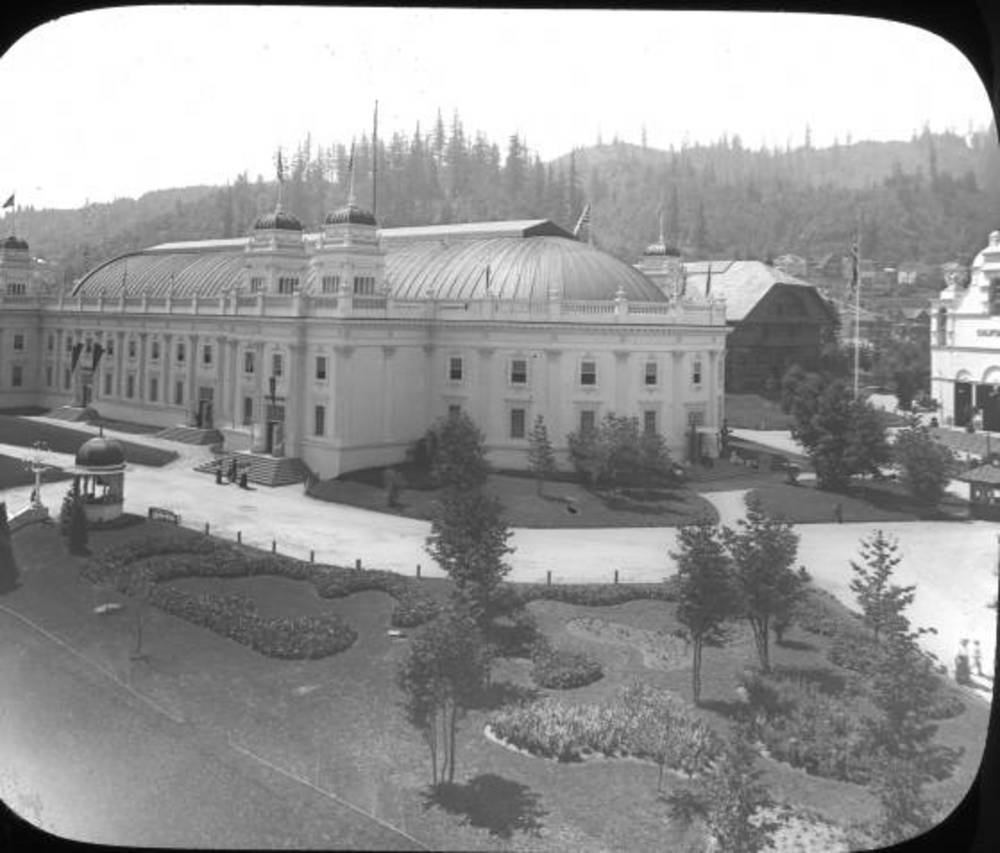Charles Cutter, whose Tlingit name was Dockh-hoh-kharckh, was an actor and singer who performed under the stage name Chief Eagle Horse during the early decades of the twentieth century. In 1900, he entered the off-reservation Chemawa Indian Boarding School in Salem, where he sang in the band program. His first public performances were in Portland, and he performed professionally both regionally and internationally. Cutter’s popularity led him to a national campaign advertising war bonds for the United States during World War I, and in 1919, he appeared in a Broadway production of Hitchy-Koo 1919, a musical revue.
Born in Juneau, Alaska, in about 1878, Cutter grew up in Klawock on Prince of Wales Island. He attended Sitka Industrial Training School, where he learned English, and in about 1900 was sent to Chemawa, where he trained in carpentry. While working as a carpenter in Portland in 1902, he sang at a Chautauqua at Gladstone Park, where he was noticed by W. H. Boyer, a voice coach who offered to give him lessons. Cutter was soon performing as a soloist and as a member of various choirs, singing in a baritone voice that one reviewer of Carnival of Venice in 1905 described as having “wonderful power.”
Cutter appeared in operas with the People’s Theater, singing in English, German, or Italian and, in later performances, “Indian” language. Beginning in 1904, he performed in numerous venues around Portland, including the First Congregational Church, the Marquam Grand Opera House, and the Star and Majestic Theaters. In 1913, he performed for soldiers at the Portland YMCA.
On July 6, 1905, Cutter joined Chemawa students in a performance at the unveiling of the Sacagawea statue at the Lewis and Clark Exposition in Portland (the statue is now at Washington Park). Two years later, when composer John Philip Sousa was in Portland, Cutter performed for Sousa, who was impressed enough that he recommended Cutter to the Conried (Metropolitan) School of Opera in New York City. Whether he attended is unknown, but it was noted in later biographies that he studied in the East.
In 1909, for a charity festival and fair known as a kermes (or kermess/kirmess), Cutter borrowed a Sioux outfit that included a “war bonnet,” moccasins, and a blanket to make his dance performance appear more authentic. The production was a success, and by 1912, Cutter had adopted Chief Eagle Horse as his stage name; he used that name for the remainder of his career. In 1912, after a vaudeville performance at the Hippodrome Theatre in Baltimore, Maryland, Chief Eagle Horse reportedly went straight to the Hammerstein Ballroom in Manhattan.
In 1914, Chief Eagle Horse toured and performed in Australia, where he met with Aboriginal leaders. During World War I, the U.S. military hired him to promote national patriotism in cities such as New York City, where he was photographed speaking to a large crowd. National newspapers and magazines such as Popular Mechanics published photographs of him in a Sioux eagle feather bonnet, singing and speaking to a crowd about “joining [the hands of] Army and Navy.”
After touring for a year in Australia, Cutter returned to the United States to sing at the Plaza Theater in Fresno, California, where he was billed as a Cherokee. At the time, “Indian” performances, dress, and art were popular. To fit into their romantic ideas about “Indians,” many American theater-goers wanted to see “savage Indians” perform so-called civilized roles. Cutter adapted to the demands of show business throughout his career and often dressed in Plains or Sioux regalia.
As a soloist, Cutter performed in vaudeville variety shows and had roles in silent films and stage productions. Between 1910 and 1922, he toured the West Coast, performing in Tacoma, Carson City, Los Angeles, Santa Rosa, San Jose, San Francisco, San Pedro, Humboldt, and Napa, where he was described as an “Indian Novelty.” In 1913 in Seattle, he was billed as the “World’s Greatest Indian Baritone,” and the next year in Fresno, California, he was advertised as an “educated Indian.”
Chief Eagle Horse appeared at the Liberty Theater in New York City in Hitchy Koo 1919, a revue with music and lyrics by Cole Porter; it ran for fifty-six performances. During the 1920s, he joined a troupe that included Princess Wasula, a well-known “Indian” dancer, and at least forty other entertainers. Chief Eagle Horse, an important attraction for the revues, received solo billing in advertisements. Most of the performers were white, with some playing “Native American” characters; his inclusion added authenticity to the performance. One skit was described as a “hilariously amusing historical scene of Pocahontas and John Smith, with jazz dances by the Indians.”
Cutter married Nanette Petit, a Parisian entertainer, in 1924, and the couple settled in Klawock, near his family. In the late 1920s, he performed in Seattle and cities in Alaska. In retirement, he became a music instructor in Juneau. Charles Cutter died at the Government Hospital there on April 20, 1938.
-
![]()
Charles Cutter (Chief Eagle Horse), 1906.
Portland Sunday Oregonian, May 27, 1906
-
![]()
"Chief Eagle Horse, Baritone Singer at the New Grand Theater, November 21, 1913.
Courtesy Baker City Herald
-
![]()
Ad for Chief Eagle Horse's appearance at the People's Theatre, Portland, 1912.
Portland Oregon Daily Journal, January 14, 1912
-
![]()
"Indian Chief Sings at Empire Theater," May 13, 1914.
Courtesy Fresno Morning Republican
-
![This photo was featured in newspapers across the county.]()
"Chief Eagle Horse Joins the Army and Navy," May 23, 1917.
This photo was featured in newspapers across the county. Courtesy The East Oregonian
Related Entries
-
![Chemawa Indian School]()
Chemawa Indian School
Chemawa Indian School, located in the mid-Willamette Valley north of Sa…
-
Indian Boarding Schools
At the beginning of the twenty-first century, only one Indian boarding …
-
![Lewis and Clark Exposition]()
Lewis and Clark Exposition
Portland staged its first and only world's fair from June 1 through Oct…
Related Historical Records
Map This on the Oregon History WayFinder
The Oregon History Wayfinder is an interactive map that identifies significant places, people, and events in Oregon history.
Further Reading
Lewis, David. "Chief Eagle Horse Baritone Singer from Alaska." The Quartux Journal. July 15, 2019.
Weaver, Jace. "Ethnic Cleansing, Homestyle." Wicazo Sa Review 10.1 (Spring 1994): 27-39.
Mac Rae, Marion. "At the Chemawa Indian School." Portland Oregonian, October 4, 1903.
"In Indian Attire: Membes of Woman's Club Honor Sacajawea." Portland Oregonian, January 9, 1904.
"Statue of Bird Woman Unveiled." Portland Oregonian, July 7, 1905.
"Not and Alien: Chief Eagle Horse; American Citizens and White Australia." The Bathhurst Times, January 8, 1914.
"Indian Aids Recruiting." The Buffalo Times, June 6, 1917.
"Troops are Entertained." Portland Oregonian, September 2, 1918.
"Hitchcock Play Highly Praised L. Angeles Times." Medford Mail Tribune, May 17, 1920.
"Chief Eagle Horse marries Nanette Petit." The San Francisico Examiner. June 9, 1925, p.13.

